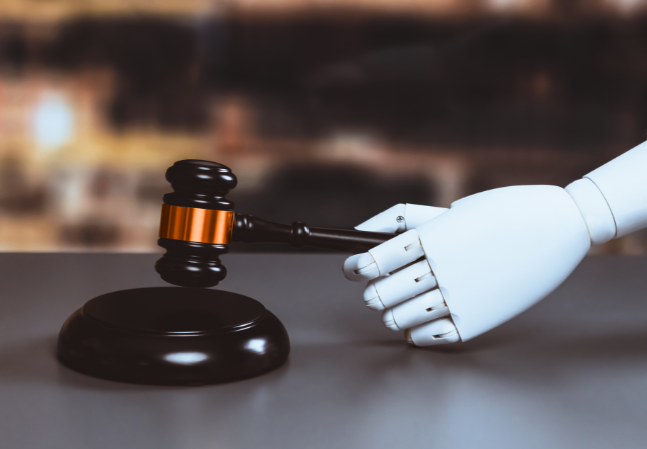- videocam On-Demand Webinar
- signal_cellular_alt Intermediate
- card_travel Personal Injury and Med Mal
- schedule 90 minutes
Weather-Related Vehicle and Pedestrian Accidents: Avoiding Missteps When Establishing Liability and Causation
Challenges of Investigation, Insurance, Effective Use of Experts, Unique Defenses, Comparative Negligence, and More
Welcome! Save 30% on all CLE, CPE, and Professional Skills webinars, plus 15% off any annual pass with code HOLIDAY25
About the Course
Introduction
This CLE webinar will discuss avoiding potential missteps when dealing with the special liability and causation challenges that arise from weather-related accidents. The panel will address investigation, insurance, the effective use of experts, defenses, comparative negligence, and more.
Description
The National Highway Traffic Safety Administration estimates that annually approximately 1.2 million, or 21 percent, of car accidents are caused by hazardous weather, including around 5,376 fatalities. Many of these accidents are multiple vehicle chain reaction events. Not every accident is caused by rain or snow, but may also result from low visibility, dense fog, sun glare, snow falling off the roof of a truck or car and hitting another vehicle, pedestrian accidents from visibility and natural lighting conditions, falling trees, black ice from freezing rain and refreeze, and construction equipment blown into oncoming traffic from high winds.
One of the biggest challenges in weather-related accidents is determining liability, which is much more complicated and challenging than in ordinary accidents and thus hides pitfalls for counsel.
A different set of factors is often considered in determining fault. Comparative fault and special defenses take on greater importance. Different kinds of experts and those who specialize in weather-related causation analysis may be required. Normal conditions that pose no enhanced risk can become deadly hazards under various weather conditions.
Listen as this panel of an experienced plaintiff’s attorney and expert meteorologist discuss how weather-related accidents are different from other kinds of vehicle accidents and how counsel can avoid missteps when pursuing or defending claims arising from them.
Presented By

Mr. Else is a Senior Forensic Meteorologist for Weather Works, LLC in Hackettstown, NJ with over 27 years of professional experience. He was granted the Certified Consulting Meteorologist designation by the American Meteorological Society in 2011, and was granted the Advanced Snow Manager (ASM) designation by the Snow & Ice Management Association in 2018. Mr. Else's specialties include: Creating site-specific Certified Past Weather Reports for both Plaintiff and Defense firms. His Areas of Expertise include: slip-and-fall accidents on snow, ice and/or water, refreeze, wind damage, lightning strikes, floods, visibility, lighting conditions, and more.

Mr. Kemp is an attorney in the firm’s litigation division. He has been with the firm for several years, beginning as a law clerk. While in law school, Mr. Kemp had the opportunity to first chair a felony jury trial at the Wayne County Prosecutor’s Office in Detroit. Prior to attending law school, he was a judicial intern for the Honorable Ronald Lowe in the 35th District Court.
-
This 90-minute webinar is eligible in most states for 1.5 CLE credits.
-
Live Online
On Demand
Date + Time
- event
Tuesday, March 11, 2025
- schedule
1:00 p.m. ET./10:00 a.m. PT
- Overview of weather-related accidents
- Visibility
- Sun Glare
- Calculating the Azimuth and Altitude angle of the sun
- Sky condition (clear vs cloudy)
- Snow squall
- Torrential rain
- Dense fog
- Lighting conditions towards sunrise or sunset and pedestrian accidents
- Twilight times: civil, nautical and astronomical
- Sun Glare
- Slippery Roads
- Rain and wet roads
- Icy roads from freezing rain, sleet, snow, and refreeze
- Bridge vs road surface
- Shaded road vs road exposed to direct sunlight
- High winds
- Blowing debris (roadway signs, construction equipment) onto roads
- Falling trees and limbs
- Residual snow cover falling off moving cars and trucks
- Visibility
- Items to utilize for your case
- Police report
- Decoding the report. Look for roadway conditions and environmental conditions
- Final outcome from police investigation
- Video, photos, eyewitnesses
- Meteorology report
- Engineer report
- Arborist report
- Police report
- Insurance considerations
- Factors considered in determining liability
- Defenses
- Comparative negligence
- Act of God
- Sudden emergency
- Unavoidable accident
The panel will review these and other critical questions:
- What responsibilities do drivers have during adverse weather?
- What is considered a sudden emergency?
- Is poor visibility a defense?
- What are best practices for gathering evidence from the accident scene when the weather may alter it?
Unlimited access to premium CLE courses:
- Annual access
- Available live and on-demand
- Best for attorneys and legal professionals
Unlimited access to premium CPE courses.:
- Annual access
- Available live and on-demand
- Best for CPAs and tax professionals
Unlimited access to premium CLE, CPE, Professional Skills and Practice-Ready courses.:
- Annual access
- Available live and on-demand
- Best for legal, accounting, and tax professionals
Unlimited access to Professional Skills and Practice-Ready courses:
- Annual access
- Available on-demand
- Best for new attorneys
Related Courses

Medicare and Medicaid 2026 Reimbursement Requirements: Key Changes Affecting Personal Injury Lawyers
Thursday, January 29, 2026
1:00 p.m. ET/10:00 a.m. PT

Nursing Home Injury Litigation: Common Claims, Medical Records, and Damages Assessment
Tuesday, January 27, 2026
1:00 p.m. ET./10:00 a.m. PT
Recommended Resources

Making Continuing Education Work for You, Anytime, Anywhere
- Learning & Development
- Career Advancement

Getting the Most Out of BARBRI Resources
- Learning & Development
- Business & Professional Skills
- Talent Development

